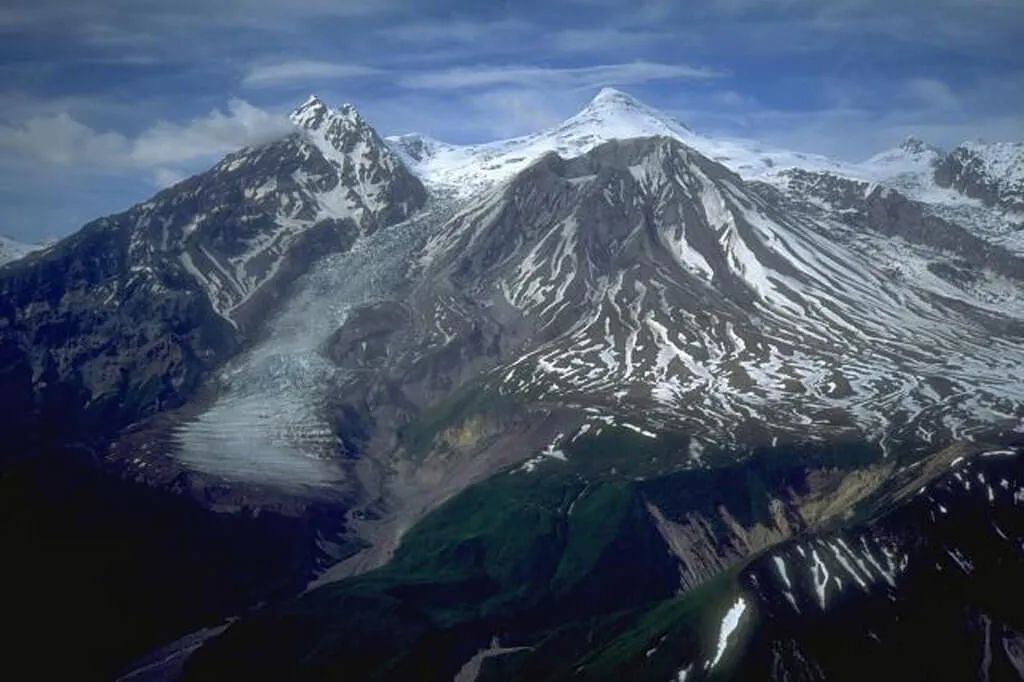Here Are The Most Threatening Volcanoes In The United States: Should We Be Worried?
There are currently 169 active volcanoes in the United States. With Mount Kilauea in Hawaii currently erupting, we're reminded how powerful and destructive volcanoes truly are.
Volcanoes are a natural phenomenon that we have no control over. All we can do is try to get out of their way. But how many are an actual threat? From a string of volcanoes in the Cascade Mountain Range to a supervolcano beneath the grounds of Yellowstone National Park, these are the most active and threatening volcanoes in the United States.
Mount Rainer Volcano, Washington
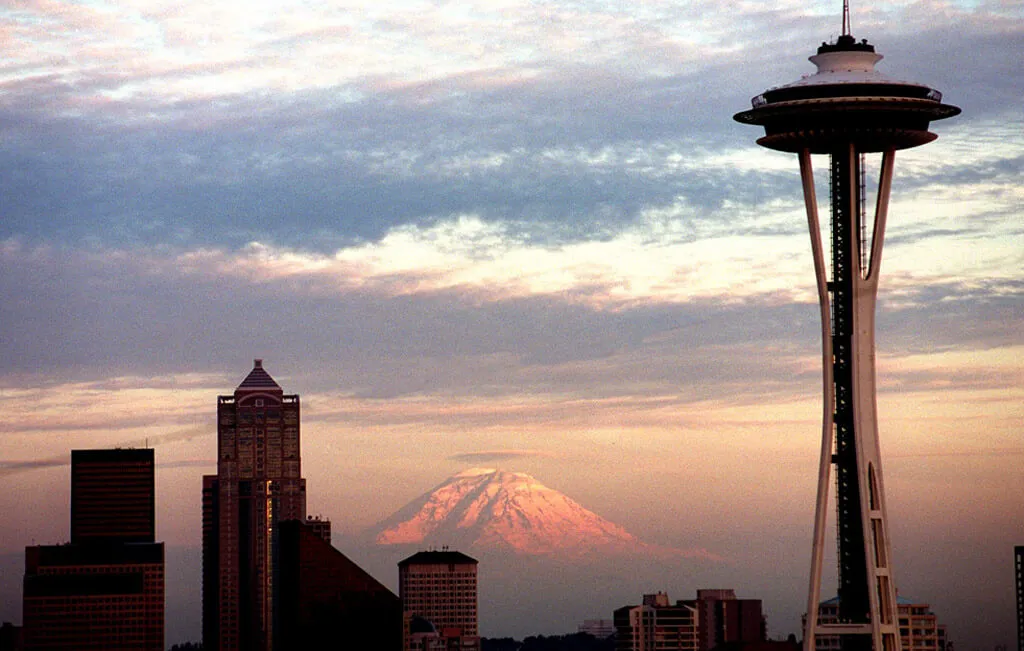
The real fear behind the potential eruption of Mount Rainer is that it's covered with more snow and ice than all of the other volcanoes in the Cascade Range combined. This means that it would lead to an unstoppable amount of lahars or volcanic mudflows.
In past eruptions, Rainer's lahars have made it all the way to the Puget Sound which is more than 62 miles away. Currently, that is a very developed area, which would be right in the direction of the lahars. Rainer is known to have activity every 500 to 1,000 years with its last eruption being over 500 years ago. Luckily, it appears the volcano isn't showing any signs of movement.
Mount Baker Volcano, Washington
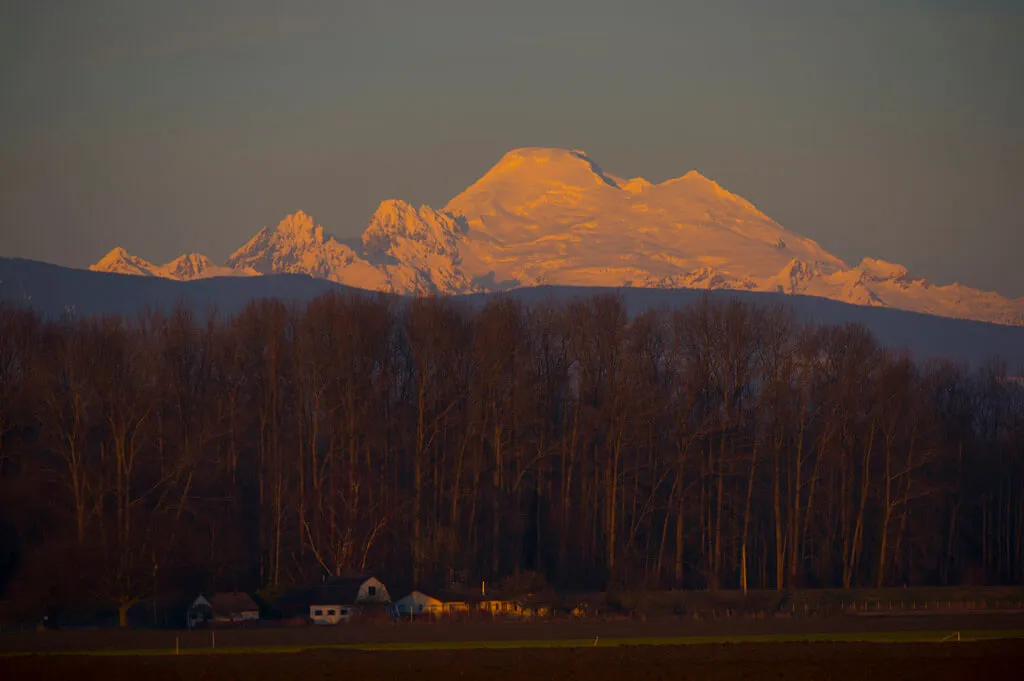
After Mount Rainer, Mount Baker is the most glaciated mountain in the Cascades. Studies show that Baker seems to be less explosive and active than other peaks in the Cascades although it had a few minor eruptions in the 1800s.
However, because of the vast amounts of ice at the top, it doesn't need a full-scale eruption to cause devastating lahars to rush down the mountainside. In 1975, there was fear of an eruption after an increase in heat flow and volcanic gases. Thankfully, it never happened. Although there doesn't appear to be any imminent flow of magma, Mount Baker is still on watch.
Mount Mazama/Crater Lake Volcano, Oregon

Around 7,000 years ago, Mount Mazama, a stratovolcano collapsed to create what we know as Crater Lake. The caldera was six miles wide and was one of the most massive eruptions of the last 10,000 years. Eventually, the water caldera cooled which formed the lake.
No rivers or streams are coming in or out from the lake, and its only source of water is rain and snowmelt. With evaporation and added water, it is estimated that the water is completely replaced every 250 years. However, hydrothermal activity has shown signs on the lake's floor that eventually Mount Mazama will most likely erupt again.
Mauna Loa Volcano, Hawaii

Although the most recent eruption of Hawaii's Kilauea volcano has been devastating enough, there's another volcano in Hawaii that has proven to be far more dangerous. The Mauna Loa Volcano is the largest volcano on earth and has erupted 33 times since it was first documented in 1843. Although it has been relatively dormant since 1984, it is still a looming threat.
The reason for its constant activity is because the Pacific crust in that area has been sinking below the continent. This contact with water causes melting and therefore creates volcanoes. The location of the volcano has made it part of the Decade Program, which promotes research of the world's most dangerous volcanoes on earth.
Lassen Volcanic Center, California

Although Lassen Peak is an unpredictable volcano in Northern California, it is one of a string of volcanoes known as the Lassen Volcanic Center. All of these volcanoes are considered to be relatively dangerous and active.
The next eruption might not occur specifically on Lassen Peak but could be on a neighboring volcano, or a new one entirely. Lassen's last eruption occurred between 1915 and 1917 and was similar to the Mount St. Helen's eruption but on a smaller scale. The entire Lassen Volcanic Center has been under surveillance to record and predict any future eruptions in the area.
Redoubt Volcano, Alaska
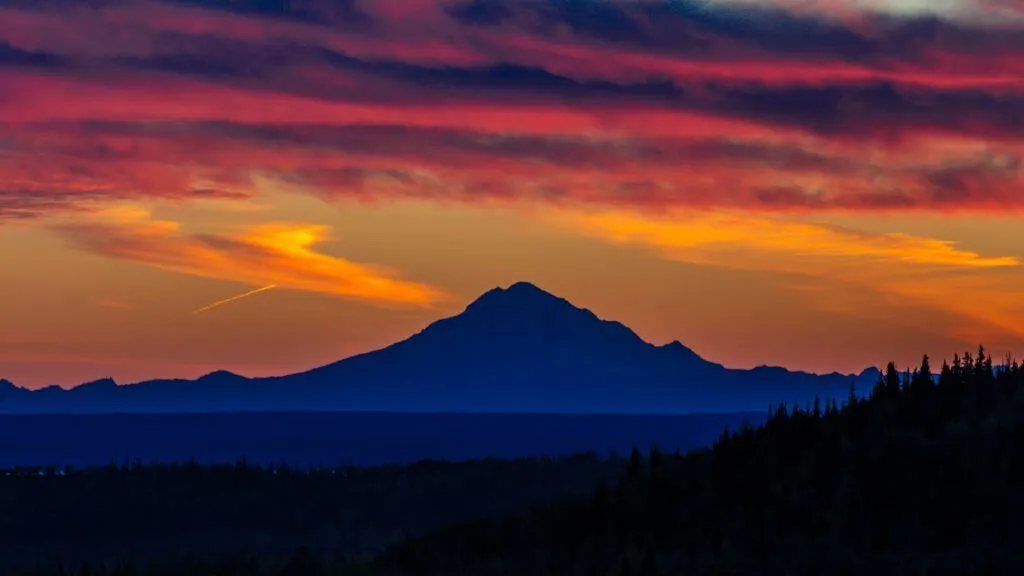
Mount Redoubt or the Redoubt Volcano is an active stratovolcano on the Aleutian Range in Alaska. It is at the head of the Chigmit Mountains subrange in Lake Clark National Park and Preserve. It is the highest summit of the Aleutian Range at 10,197 feet in elevation.
Although it has been active for more than 1,000 years, it has erupted four times since it was first seen: 1902, 1966, 1989, and 2009. The eruption of 1989 was also the first eruption that was successfully predicted by long-period seismic events. Currently, the Alaska Volcano Observatory has rated Redbout at Aviation Alert Level Green and Volcano Alert level as normal. However, that does not put an eruption out of the question.
Yellowstone Caldera, Wyoming

Beneath Yellowstone National park is a supervolcano with the potential to shoot upwards of 250 cubic miles of magma, ash, dust, and rocks into the sky in one eruption. Although an explosion of this magnitude hasn't happened in over 600,000 years, the volcano is still considered to be active.
It has been noted that an eruption of this size would have potentially worldwide ramifications and would permanently change the geographics of the surrounding locations. However, scientists claim that it's unlikely we will see an eruption like that in 1,000 or even 10,000 years. To be safe, NASA has even started considering strategies on how to defuse the supervolcano if it ever started showing clear signs of danger.
Mount St. Helens Volcano, Washington

On May 18, 1980, Mount St. Helens in Washington erupted, marking the most destructive volcanic eruption in United States history. It killed 57 people, blasting 520 million tons of volcanic ash into the air covering the sky for hundreds of miles in every direction.
The volcano has erupted more than any other volcano in the Cascade Range within the last 10,000 years and continues to do so on a smaller scale more recently. It is unlikely that there will be an explosion even close to the one in 1980 because the mountain is gone from the 1980 blast. However, that doesn't mean that a new explosive cycle isn't out of the question.
Three Sisters Volcanoes, Oregon
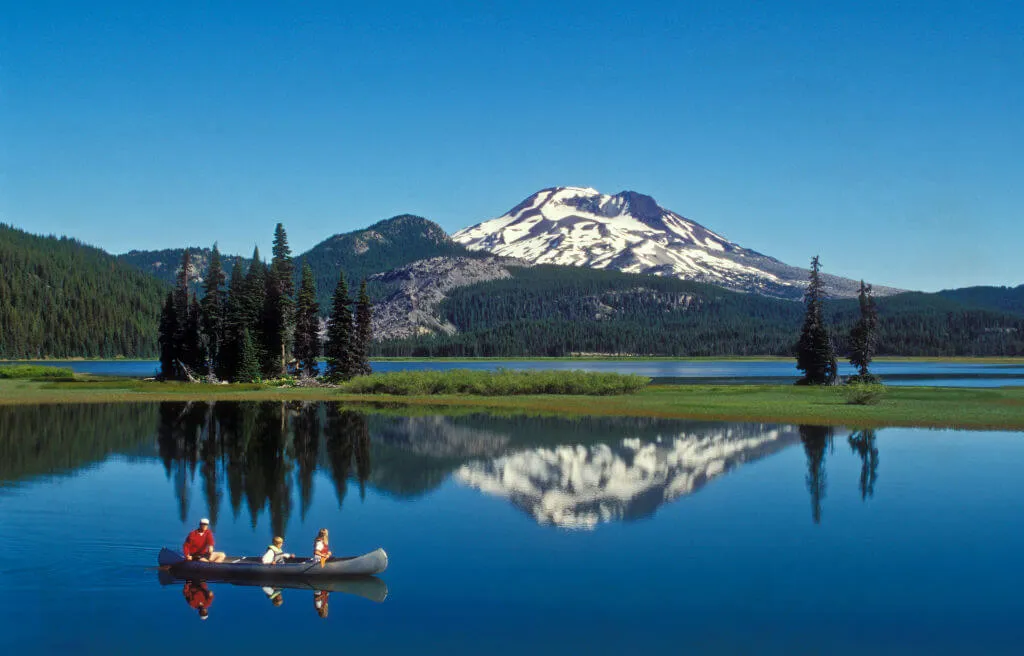
The South Sister Volcano is part of the Three Sisters volcanic hotbed that spans over 115 square miles west of Bend, Oregon. Although the South Sister has been labeled as a "very high threat" by the United States Geological Survey, it has been noted that next eruption could come from any one of the Three Sisters.
In the late 1990s and early 2000s, something now known as "the Buldge" began to develop between the Middle and South Sister. It was believed that this deformation was a collection of magma underground which could have led to an eruption. Although "the Bulge" has since decreased, it doesn't mean that it won't result in an eruption in the future.
Mount Augustine Volcano, Alaska
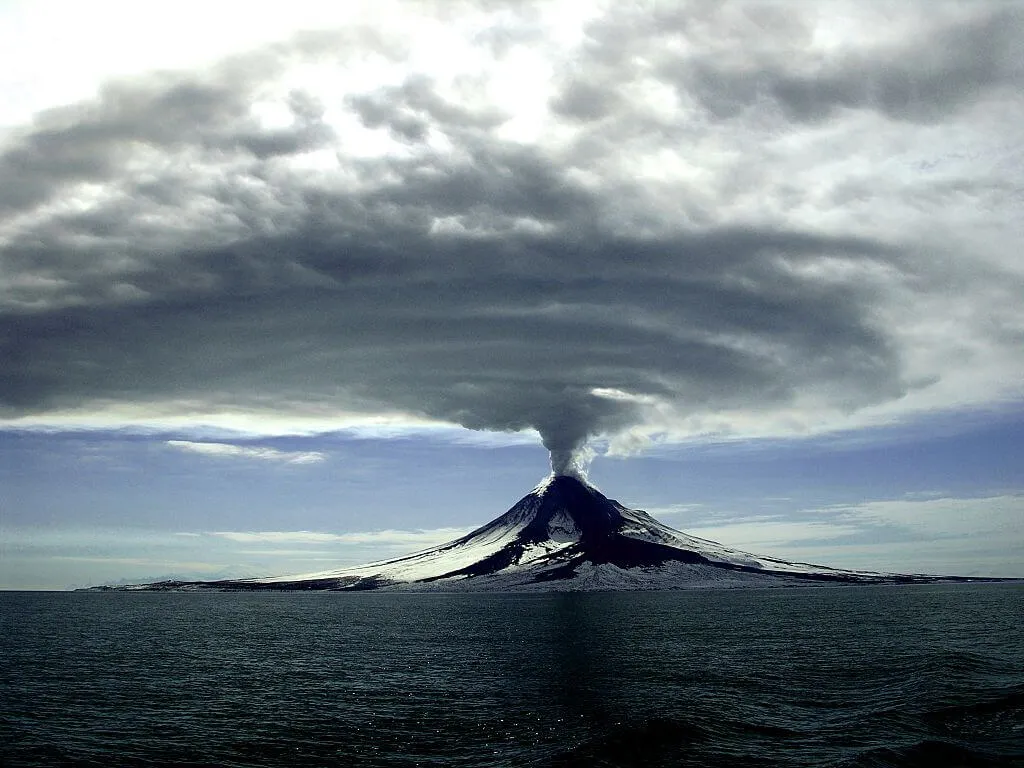
The Augustine Volcano forms Augustine Island in the Kenai Penninsula Borough of southcentral coastal Alaska. The island has an area of 32.4 square miles and is primarily made up of post-eruption deposits. The island is inhabited with a summit altitude of 4,134 feet. The summit also consists of overlapping lava dome complexes that have been formed over time in both prehistoric and modern eruptions.
In recent years, the volcano erupted on numerous occasions, with the largest being in 1986 when ash deposits reached Anchorage around 174 miles away. Because the island is uninhabited and relatively distant from most developed areas scientists keep an eye on it but without much worry.
Mount Shasta Volcano, California
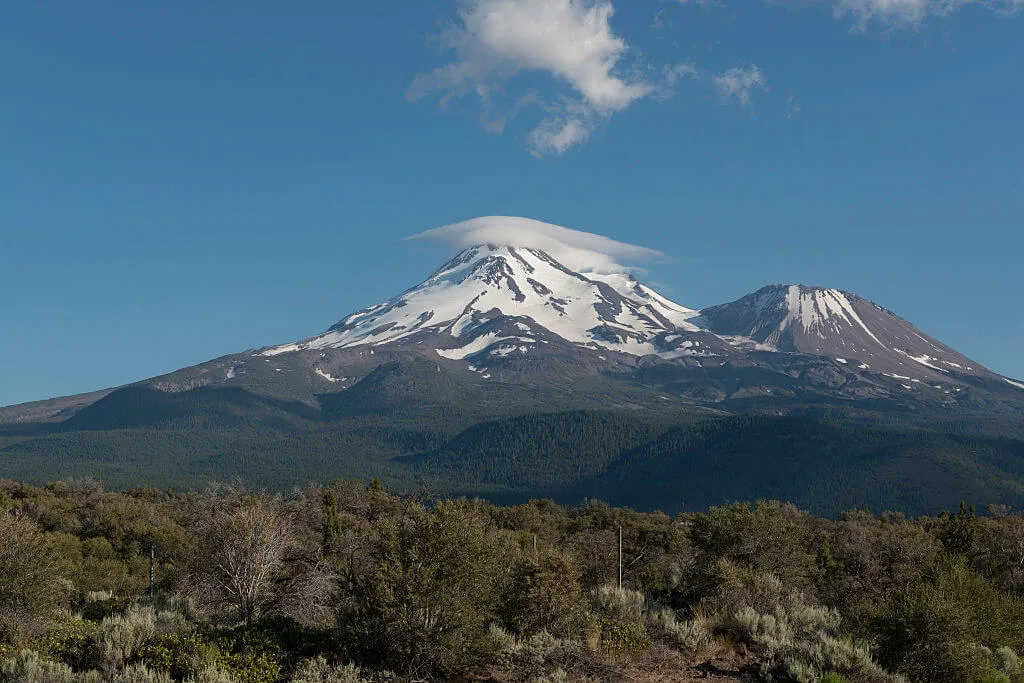
Another volcano in California classified as "very high threat" by the United States Geological Survey is Mount Shasta. This volcano is concerning because there are densely populated communities at the base and on the face of the mountain.
The last reported eruption from the mountain was seen all the way from the Pacific Ocean in 1786. However, it is assumed that the explosion wasn't all that disastrous. Although we haven't seen an eruption from it for hundreds of years, it is still considered to be an active volcano that requires constant observation for fear of something happening in the future.
Long Valley Caldera, California

The Long Valley Caldera is a depression in the earth in eastern California. Located adjacent to Mammoth Mountain, it measures around 20 miles long, 11 miles wide, and 3,000 feet deep.
The caldera was formed after the eruption of a supervolcano over 760,000 years ago. This left a giant depression in the earth which now includes thermal springs and gas emissions which have been killing the trees and wildlife in the area. Over the last few decades, there has been the various activity such as earthquakes, uplift in the dome, and changes in thermal spring and gas emissions. This has risen concern among scientists about a possible eruption in the future.
Mount Hood Volcano, Oregon

Located in Oregon, Mount Hood was very active during the end of the last Ice Age, with two significant eruptions over the course of the last 1,500 years. The last one is believed to have occurred not long before the Lewis and Clark expedition West.
Research has shown that the mountain may have recently stopped being dormant, meaning that there should be an expected eruption every few centuries starting soon. What's threatening about volcanic activity on Mount Hood is that numerous highways and communities are right in the wake of any major eruption.
Glacier Peak, Washington

Glacier Peak is one of the most active volcanoes in the Cascades. However, it is the most remote of the active volcanoes in the region. Glacier Peak and Mount St. Helens are the only two volcanoes in Washington that have seen massive explosions over the last 15,000 years.
This is because their eruptions explode outward rather than flow generally from the top vent. Also, because it is covered in snow, eruptions lead to large lahar flows which cause extensive damage to the mountain. Its last explosion was 300 years ago, and the USGC believes we may not end up seeing another eruption from it in our lifetime. Nevertheless, it is monitored on a regular basis just in case.
Mount Akutan Volcano, Alaska

Mount Akutan is a stratovolcano located in the Aleutian Islands of Alaska. The mountain has 1.3-mile caldera that was formed after a significant eruption around 1,600 years ago. Over the years, there have been minor eruptions with a lava flow in 1978 reaching within a mile of the coast.
The most recent volcanic activity was back in 1992, yet there is still activity at the base of the Lava Point. Moreover, an earthquake swarm in 1996 led to some changes on the mountain and had people preparing for another eruption. Many people evacuated the island, yet nothing major ended up happening.
Mount Makushin Volcano, Alaska
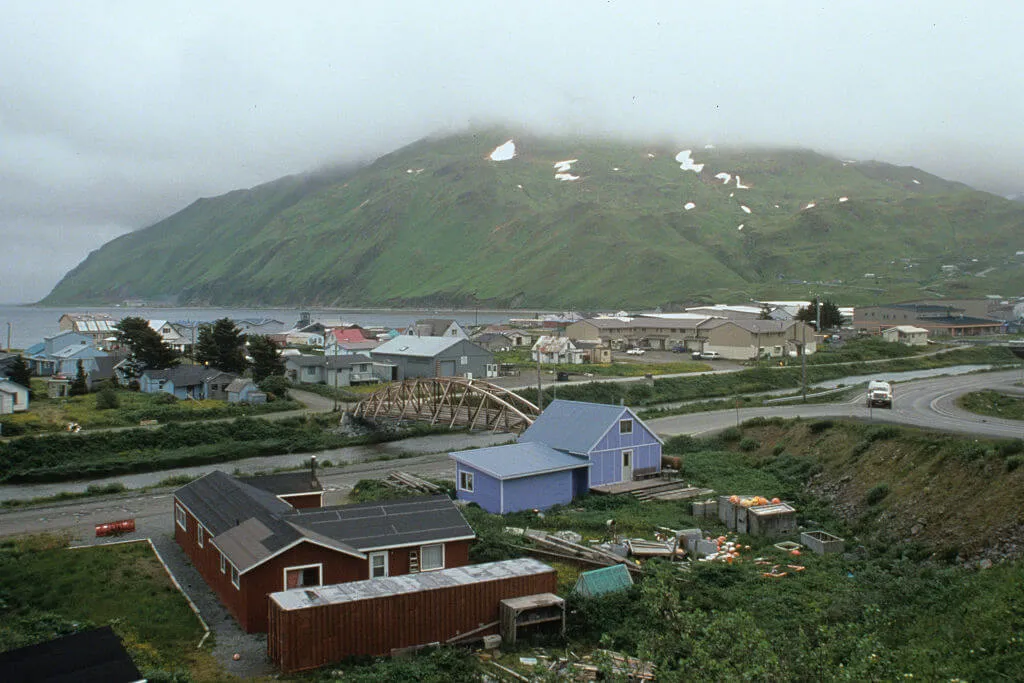
Mount Makushin is an ice-covered volcano located on Unalaska Island in the Aleutian Islands of Alaska. Its summit is the highest point of the island at 6,680 feet in elevation. Out of all of the 52 active volcanoes in the state of Alaska, it is considered to be the most active.
Over the past several thousand years, it has erupted 24 times. It's most recent activity was in 1995. Although these eruptions were small to moderate, for the most part, people are still concerned about the possibility of a bigger eruption in the future. This would be particularly dangerous because it is situated on an island.
Mount Cleveland Volcano, Alaska

Mount Cleveland is an almost symmetrical volcano on Chuginadak Island in Alaska. It has an elevation of 5,675 feet and is one of the most active out of the 75 volcanoes in the Aleutian Arc. In the last 230 years, it has erupted over 22 times, causing one death in 1944.
In fact, it's so active that it erupted three times in 2009, twice in 2010, and once in 2011, 2017 and 2018. Monitoring the volcano has proven difficult because of its remoteness and the Alaska Volcano Observatory relies on satellite images to watch its activity.
Mount Newberry Volcano, Oregon
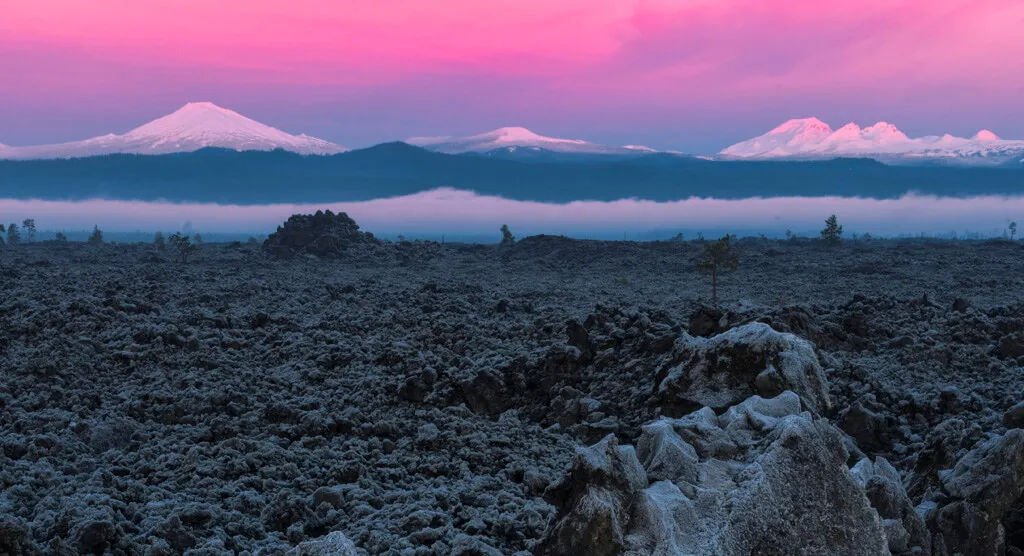
The Newberry Volcano or Newberry Caldera is an active shield-shaped volcano located 35 miles east of the Cascade Range. Roughly the size of Rhode Island, it is the largest volcano in the Cascade Volcanic Arc with a total column of around 120 cubic miles. Within the caldera, there are two large lakes which have more than 400 vents, the most of any volcano in the United States.
Although it is a popular destination for fishing, hiking, boating, and camping, it still poses a threat. It is not far from a few populated areas and is expected to eventually erupt causing lava flows, lahars, floods, avalanches, and more. It is currently being monitored by the United States Geographical Survey.
Mount Spurr Volcano, Alaska
Located in Alaska, Mount Spurr is the highest volcano in the Aleutian Arc. It has a large lava dome at the top which is open to the south. In 2004, there was a heating event which melted the snow on top and created a lake, but by 2008, it began to fill with snow after significant cooling.
Although the volcano is currently at a Level of Concern Color Green Code, in 2004, it was raised to a yellow after an increasing amount of earthquakes. These earthquakes could have been the result of moving magma beneath the mountain, but nothing more came of it. At the moment, the biggest concern of an eruption would be disrupting air travel.
Mount Adams Volcano, Washington

Mount Adams is an active volcano in the Cascade Range of Washington. Although the mountain hasn't erupted in over 1,000 years, it is still considered to be active. It is the biggest volcano in Washington and is the second largest in the Cascades.
The volcanic field which the mountain is established on has been active for over one million years with the most activity happening around 520,000 years ago. Although the volcano is also located more eastern than some others in the Cascades, it still hasn't been written off as a potential threat.
Santa Maria, Guatemala
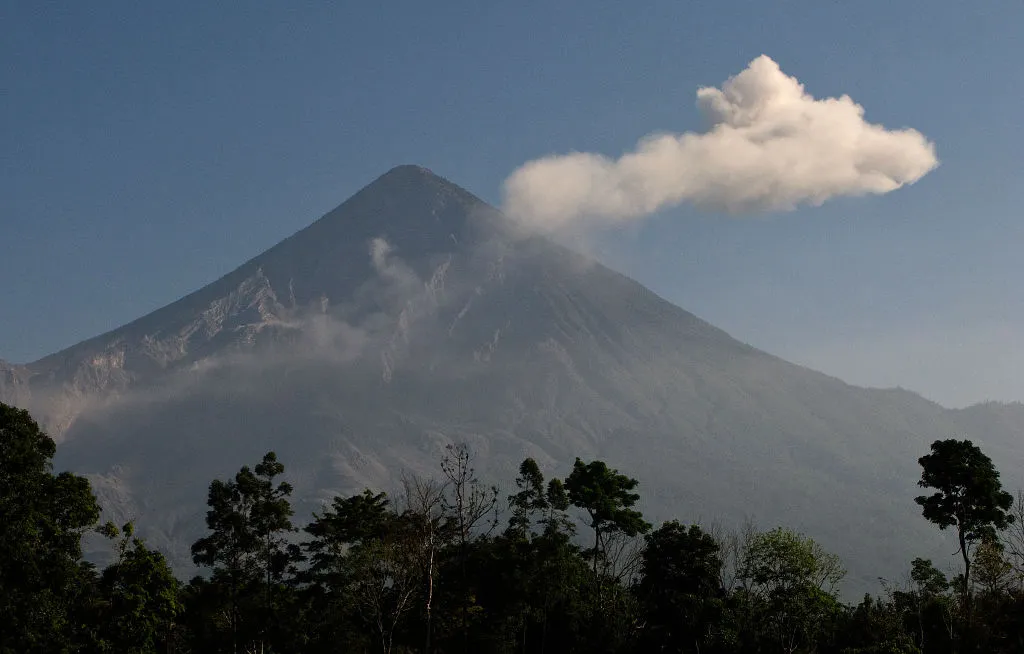
Santa Maria Volcano is a large active volcano in the highlands of Guatemala, near the city of Quetzaltenango. Its crater was formed by an eruption in 1902, which was one of the three largest eruptions of the 20th century, and one of the five largest eruptions in the last several years.
The volcano rests on the fault line of the Cocos and Carribean plate, and their movement is what usually results in an eruption. Santa Maria's last eruption was in March of 2011, with lava flow remaining consistent to the day.
Sakurajima, Japan
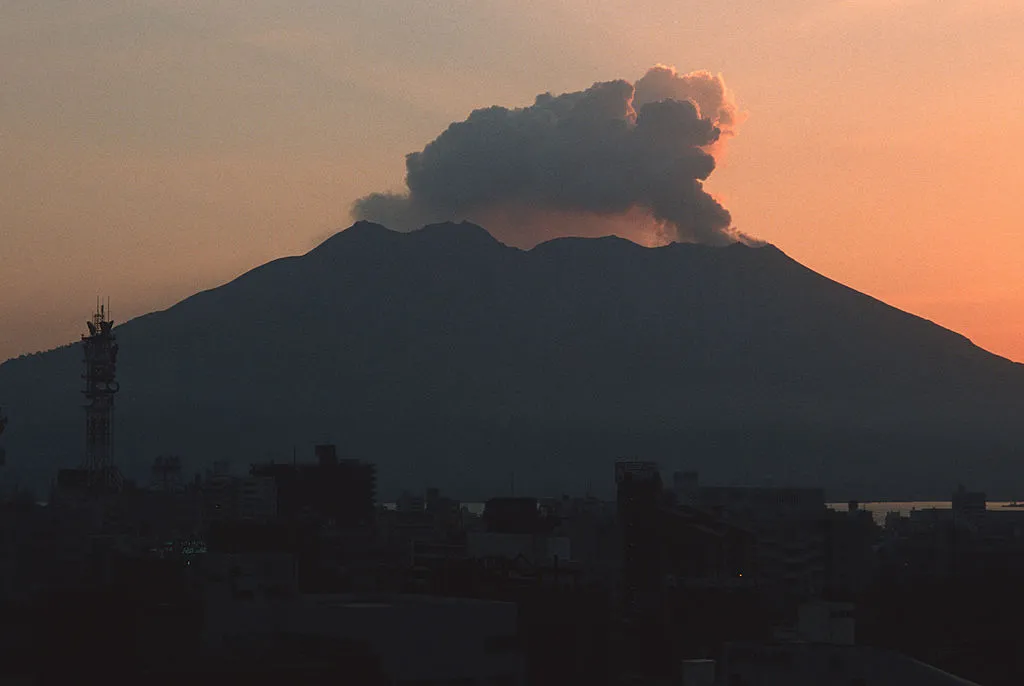
In the past, Sakurajima used to be its own island volcano. However, after countless eruptions, the lava flows spread far enough to connect it to the Osumi Peninsula in Japan. The volcano has erupted every year since 1955, which has created an issue for the nearby city of Kagoshima.
Currently, it is the most active volcano in Japan with an eruption in 2009 killing thousands. One of the most notable eruptions occurred in 1914 after being dormant for over a century, with the lava flows swallowing the surrounding islands.
Mount Nyiragongo, Congo
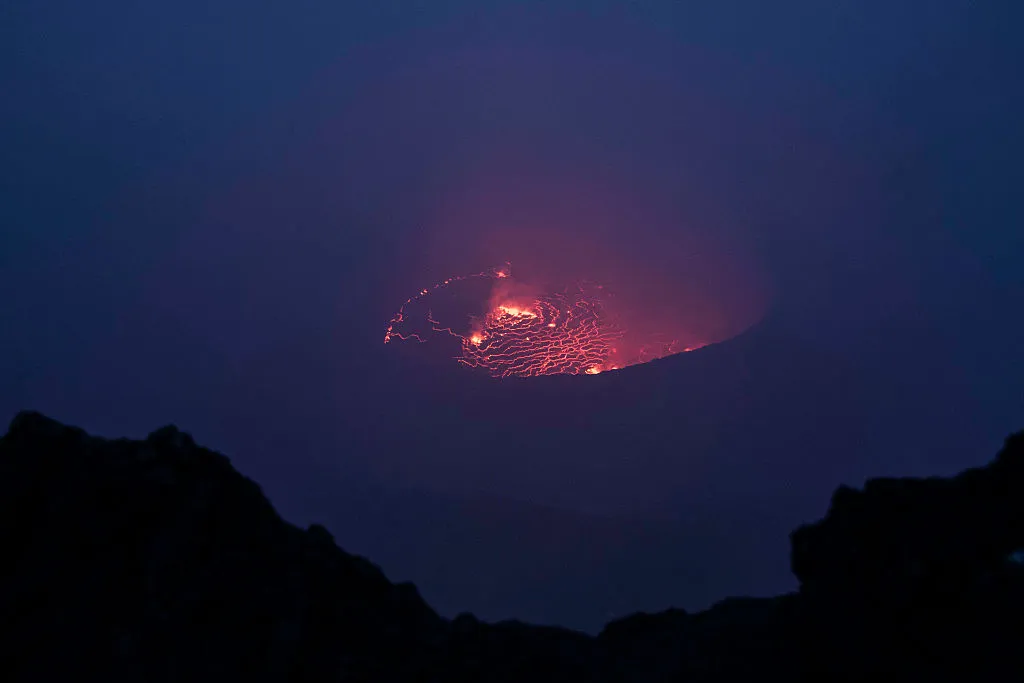
At times, Mount Nyiragongo has one of the largest lava lakes in modern times. The volcano is located in the Virunga National Park in the Democratic Republic of the Congo, and is estimated to be responsible for around 40% of all volcanic eruptions in Africa.
The volcano has erupted an impressive 32 times since 1882, with its lava in continuous fluctuation. Because of this, the volcano is considered a serious threat to the surrounding areas, since the lava has the potential to overflow.
Mount Merapi, Indonesia
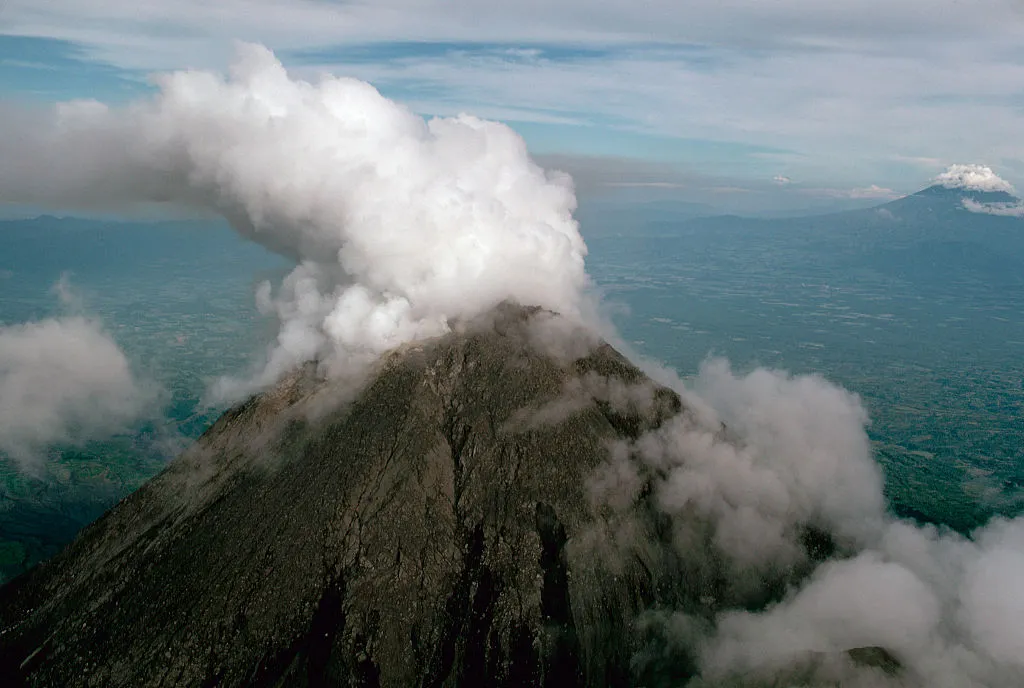
At the moment, Mount Merapi in Indonesia has produced more lava flow than any other volcano on the planet. In October of 2010, the residents of the surrounding area were put on high alert for a potential eruption.
Then, on October 25, lava began erupting out of its southern slope. The eruption was deadly, taking over 400 people's lives, leaving countless homeless. It's most recent eruption was in 2018 and is considered to be the most active volcano in Indonesia.
Galeras, Columbia
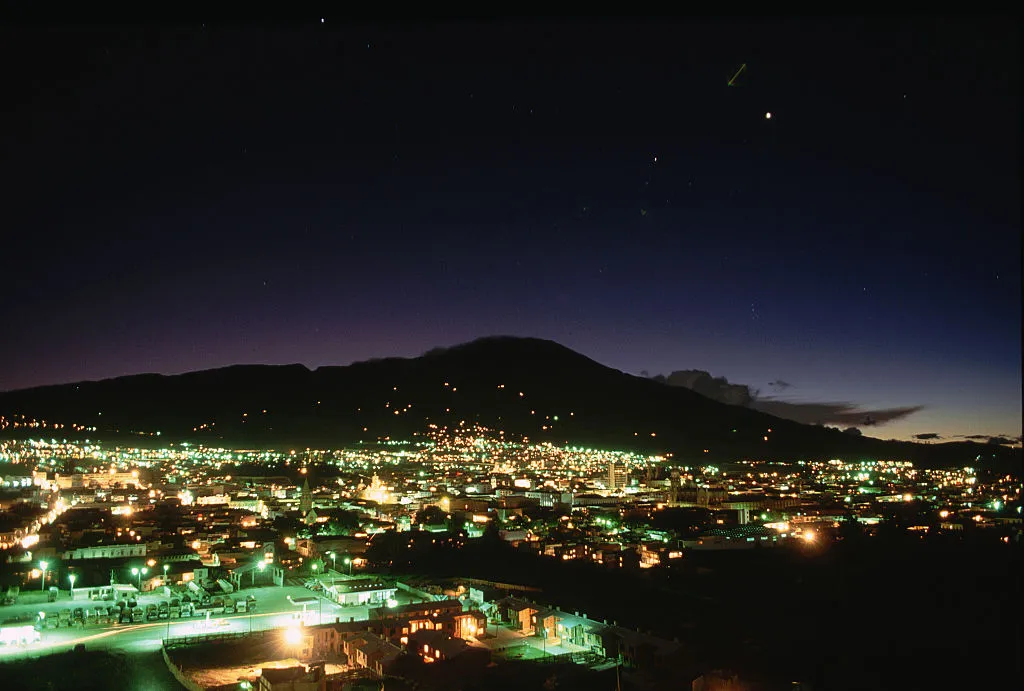
resting 4,276 meters above sea level, Galeras is a volcano that has been active for millions of years, although its first recorded eruption took place in 1580 after the Spanish conquest. The city of Pasto is in constant danger of the of a potential eruption, which are known to be significant.
Over 500,000 years ago, and eruption deposited 15 cubic kilometers of sediment onto the landscape, greatly changing the geology of the area. In 1978, scientists believed the volcano to have finally gone dormant until it suddenly erupted just 10 years later.
Eyjafjallajokull, Iceland
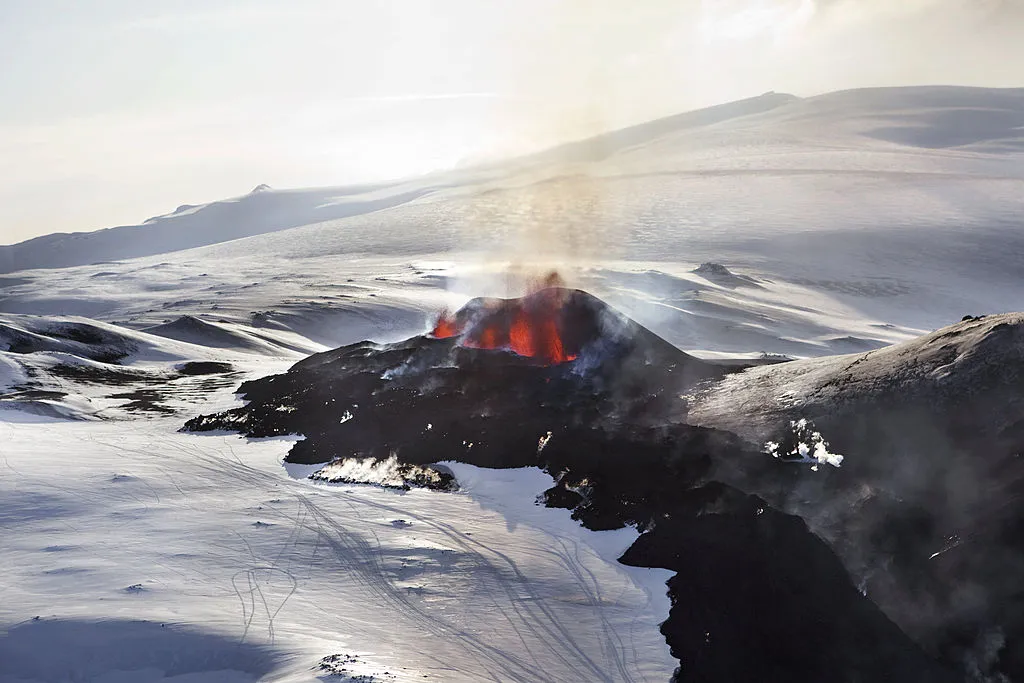
In 2010, Eyjafjallajokull erupted, causing a massive plume of ash to shoot into the air, resulting in global air traffic compilations for an extended period of time. Although the eruption was a crisis for travelers, the people of Iceland weren't so concerned with the ash cloud as they were with flooding.
During the eruption, the heat melted all of the ice, forcing mass evacuations from the surrounding areas. The stratavolcano is 1,651 meters at its highest point with a crater that around 4 kilometers in diameter.
Mount Vesuvius, Italy
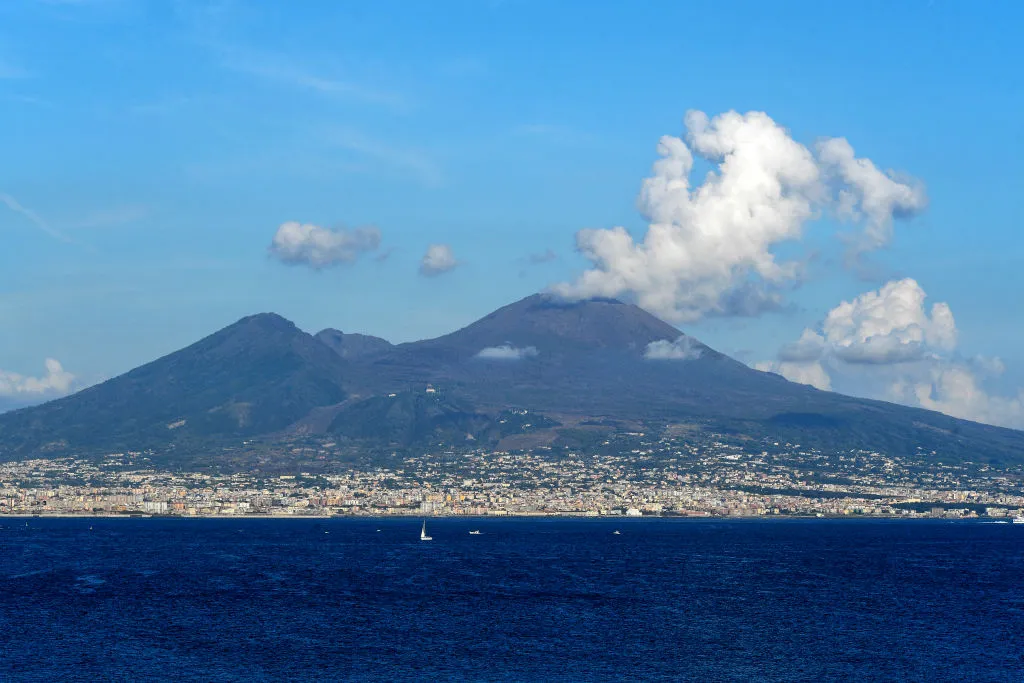
Arguably one of the most well-known volcanoes in the world, Mount Vesuvius is best known for its destruction of Pompeii on August 24, 79 CE. The volcano remains active today and is considered to be a serious threat to the city of Naples which is located just 9 kilometers away, making it the most densely populated region near a volcano in the world.
Recent studies have shown activity that scientists assume are signs of a future eruption similar to what occurred in ancient times.
Taal Volcano, Philippines
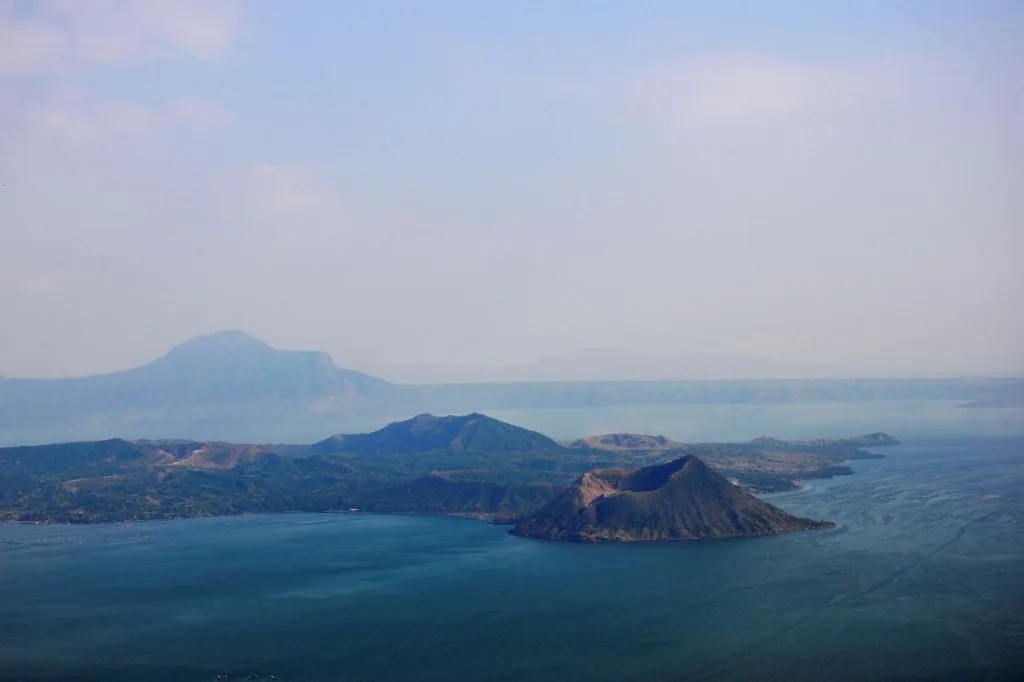
Located 30 miles off of Manila, Taal Volcano has had 33 recorded eruptions and is considered highly dangerous due to the number of deaths that it has caused in the past, killing around 5,000 to 6,000 people.
It is the second-most active volcano in the Philippines, with a lake in its crater that is assumed to have formed by prehistoric eruptions between 140,000 and 5,380 BP. Although the volcano has been relatively quiet since 1977, it's believed the next big eruption is imminent since 1991.
Novarupta Volcano, Alaska
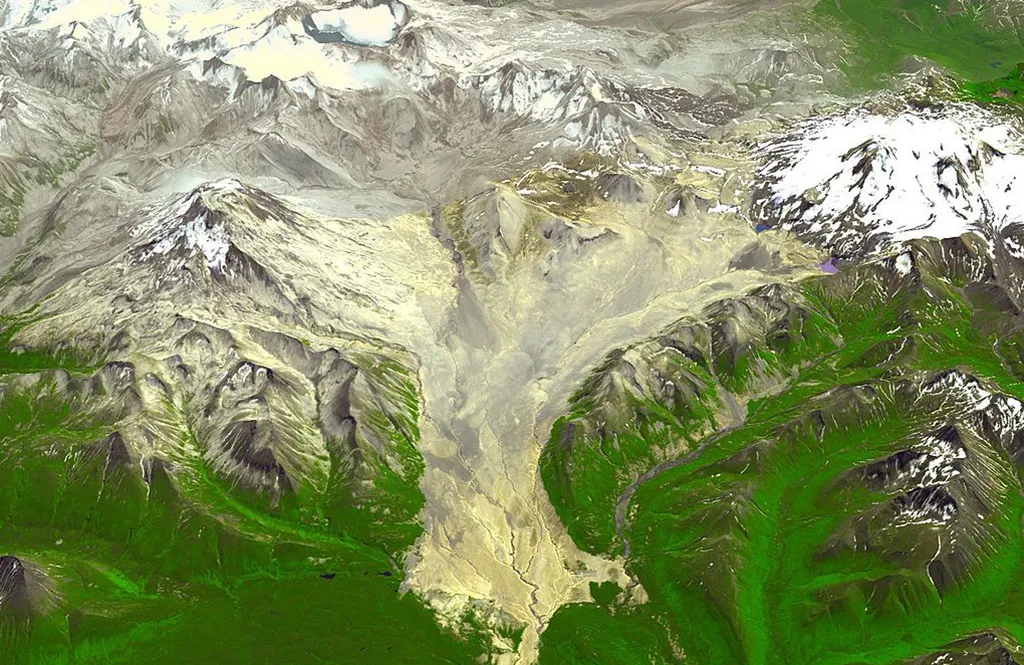
Located in Alaska's Katmai National Park and Reserve, Novarupta Volcano was created in 1912, due to an eruption that is considered to be the largest in the 20th century. The eruption sent ash and debris over 30 cubic kilometers into the air with a lava flow that formed what is now known as the Valley of Ten Thousand Smokes.
Although the surrounding area wasn't heavily populated, ash rained down across Alaska and even parts of Canada, causing respiratory issues to its residents.
Mount Fuji, Japan
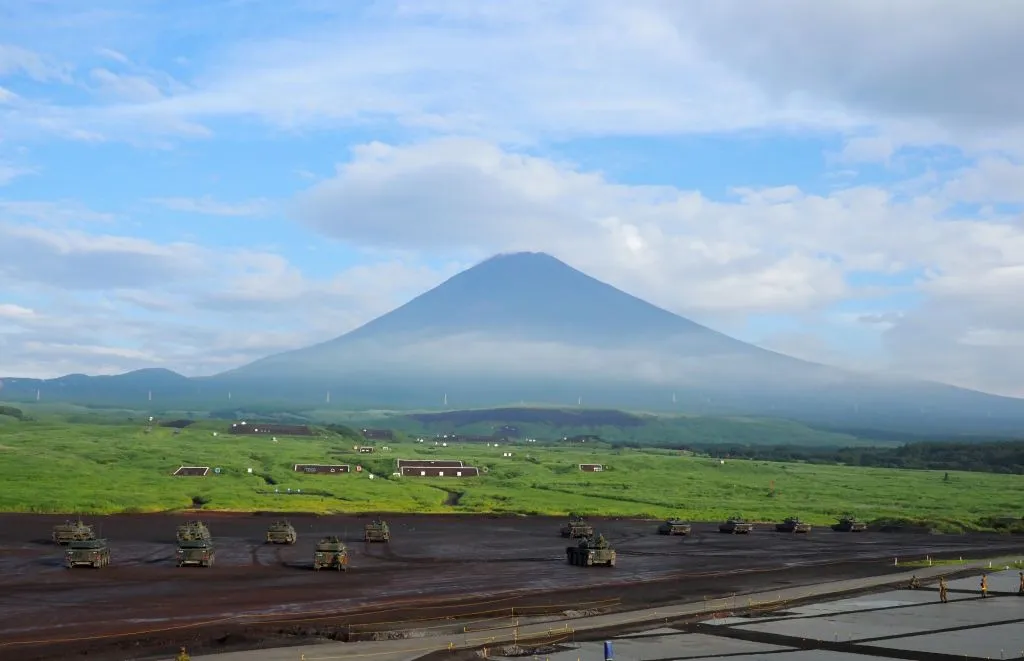
With its last eruption in 1707 due to a large earthquake, Mount Fuji in Japan has been at risk since 2011. in 2014, scientists warned of the possibility of another eruption after the 9.0-magnitude earthquake that struck Japan in 2011.
According to researchers, the earthquake raised the pressure below the volcano which could result in an eruption. If Fuji were to erupt again, according to the Global Volcanism Program, it's estimated that it would greatly affect more than 25 million people in the surrounding area.
Mount Agung, Indonesia
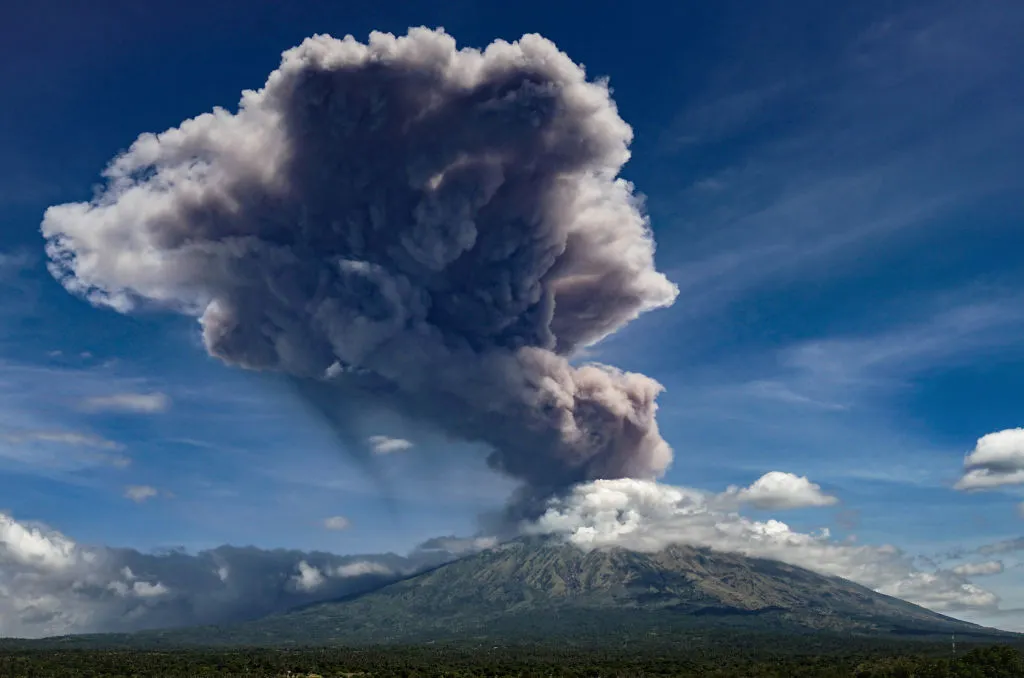
located in Indonesia, Mount Agung's last eruption took place in 1963, in what is considered to be the country's most destructive eruption to date. the 1963 eruption took place over 11 months and resulted in dense ash falls and lava flows that killed more than 1,000 people and extensive property damage.
Ash plumes have been visible from the volcano since 2018 after an eruption that occurred in 2017. Unfortunately, the volcano is located in a region home to more than 4 million people.
Mount Pinatubo, Philippines
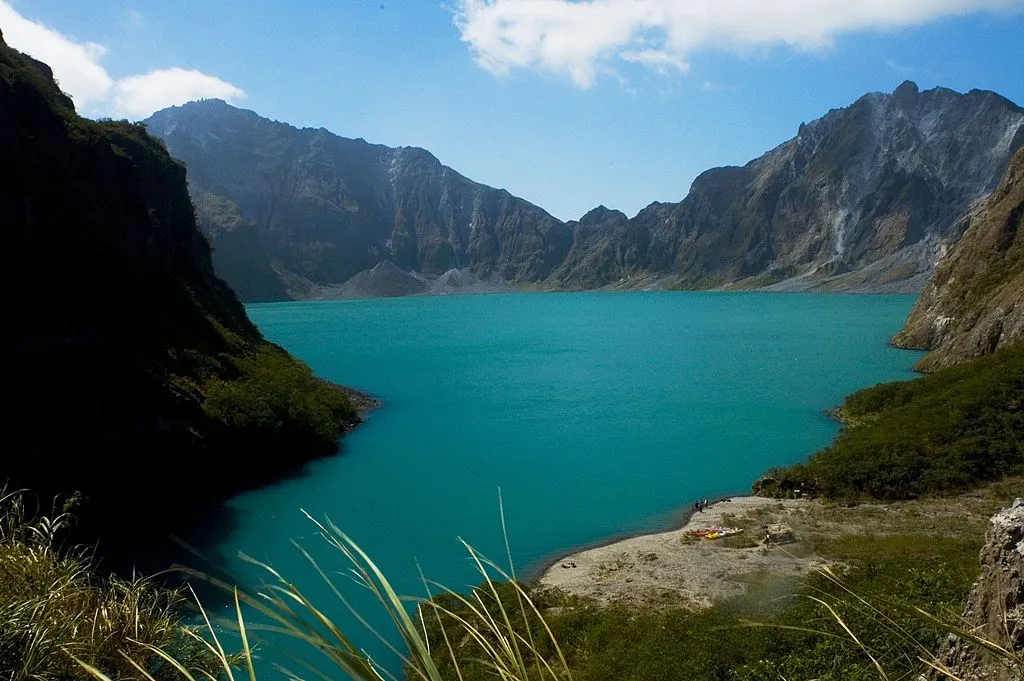
Mount Pinatubo became one of the most feared volcanoes in the world after its catastrophic eruption in 1991, which is considered to be the second-largest eruption of the 20th century after Novarupta.
Prior to the 1991 eruption, the volcano did not have a history of explosive eruptions, although this one killed at least 722 people, and forming a lake in the volcano's caldera. According to the Global Volcanism Program, today, more than 21 million people live within 62 miles of Mount Pinatubo.
White Island, New Zealand
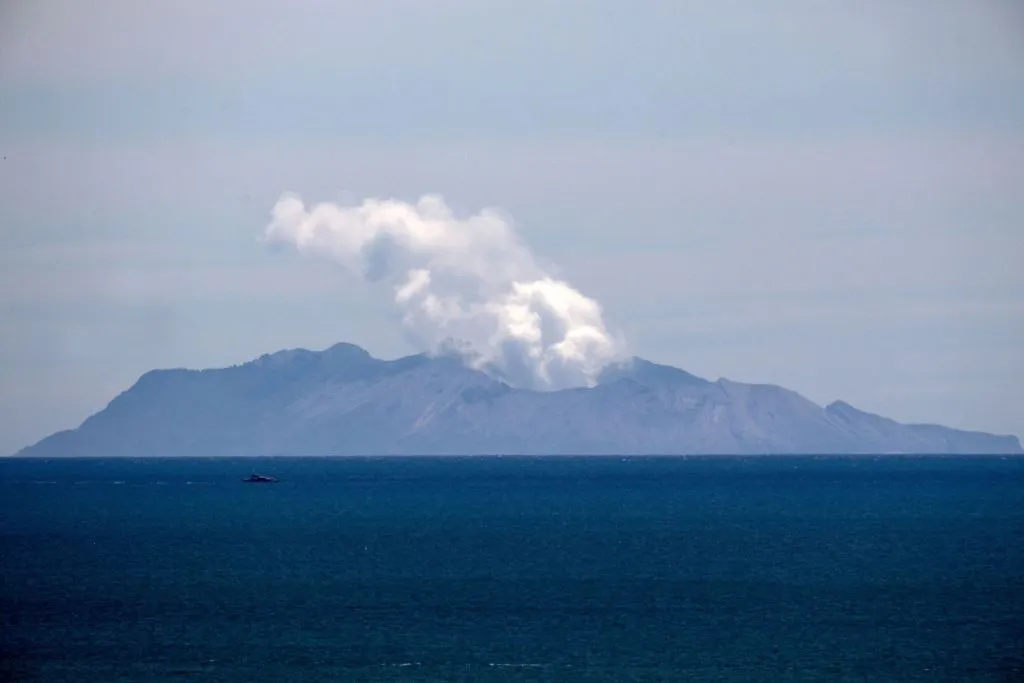
Located 30 miles from the east coast of the North Island of New Zealand, White Island is the country's most active cone volcano that has been built up by past eruptions over the last 150,000 years. The volcano erupted continuously from 1975 to 2000, making it the world's longest recorded eruption episode.
On December 9, 2019, a large eruption occurred, which led to the deaths of fourteen individuals, and injuring dozens of others. There were a total of 47 people on the island when it erupted, all either staff or members of a tour group.
Mount Etna, Italy
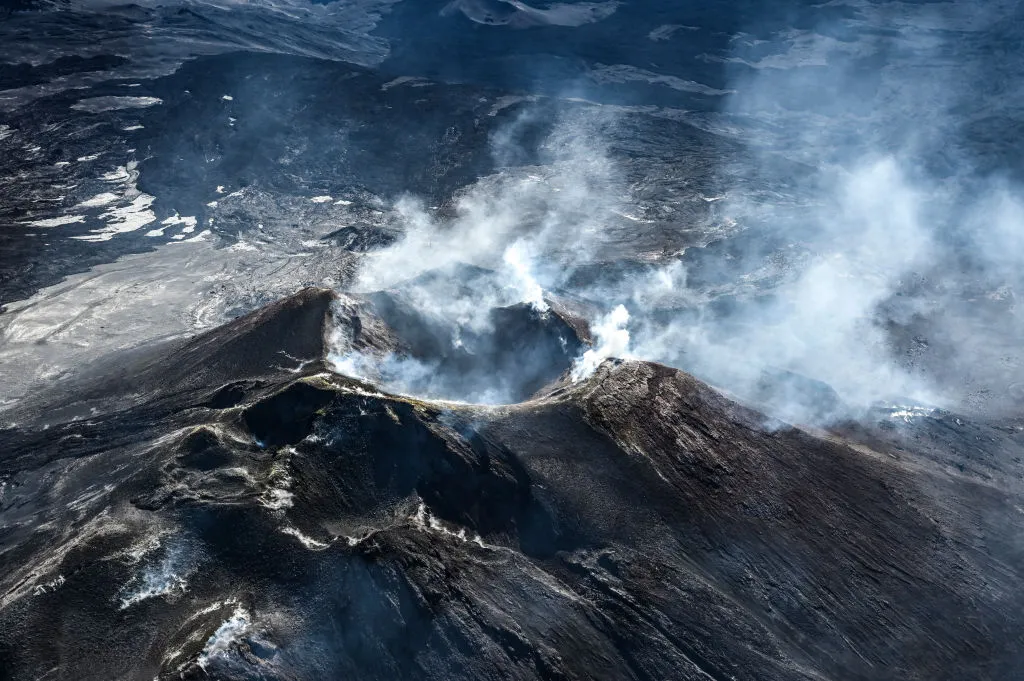
Mount Etna is an active volcano located on the east coast of Sicily, Italy, between the cities of Messina and Catania. It is the highest volcano in Italy aside from the Caucasus and the highest peak in Italy south of the Alps.
It is the largest of the three active volcanos in Italy, being two and a half times the height of Mount Vesuvius. In Greek Mythology, the volcano contained the monster Typhon after he was trapped there by Zeus and the forges of Hephaestus were said to be beneath it.
Piton de la Fournaise, Reunion Island
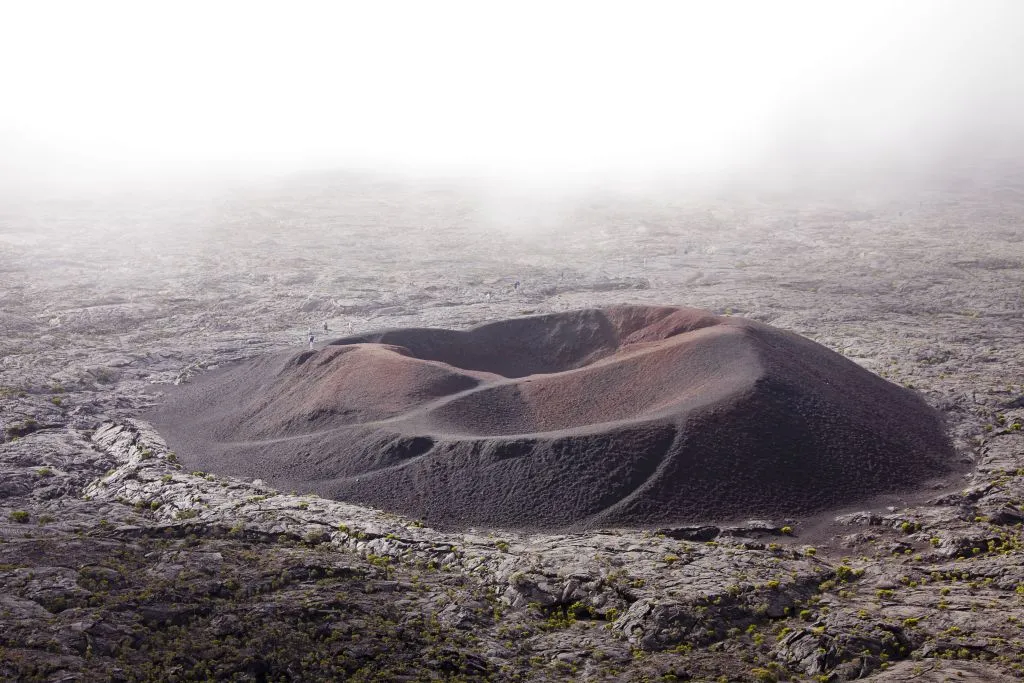
Piton de la Fourniase is a shield volcano located on the eastern side of Reunion island, a French department, in the Indian Ocean. Currently, it's one of the most active volcanoes in the world with consistent eruptions from 2007 to 2010, 2015, and the most recent in 2019.
Most eruptions are accompanied by fluid lava flowing without fire out of the cent and flowing down its sides. Although rare, eruptions outside of the caldera have occurred and pose a threat to the surrounding populations.
Stromboli, Italy
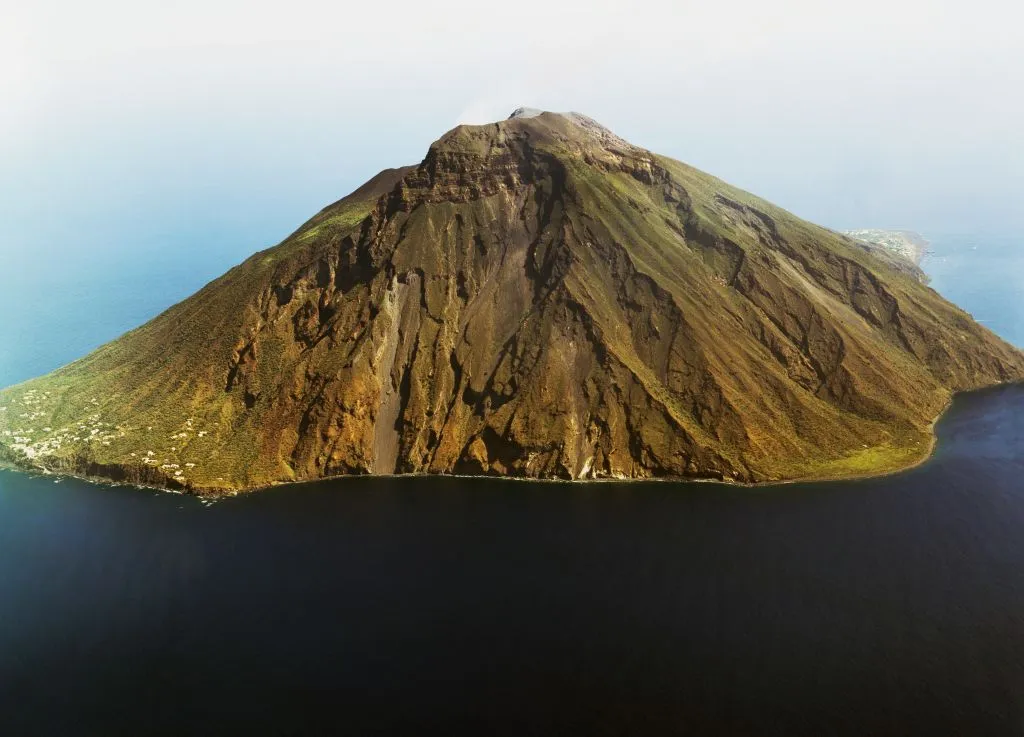
Located in the Tyrrhenian Sea, off the north coast of Italy resides Stromboli, one of the three volcanoes in Italy. Throughout history, the volcano has erupted on several occasions and is constantly active with minor eruptions.
The island can be seen from many parts of the surrounding sea, earning it the name of the "Lighthouse of the Mediterranean." The volcano is 926 meters above sea level with three active craters at the peak. As of 2016, the island has a population of 500 inhabitants.
Erta Ale, Ethiopia
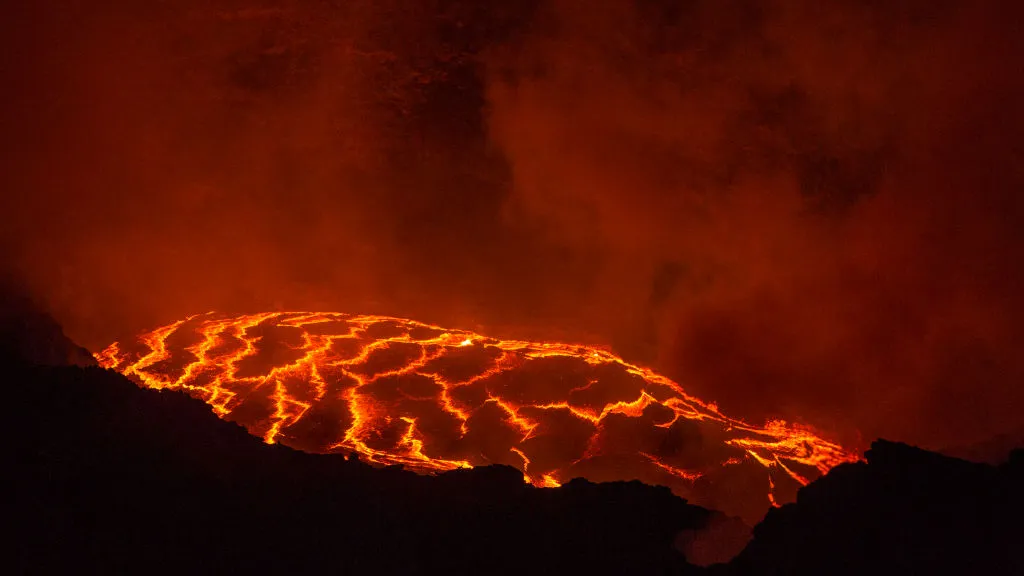
Erta Ale is an active shield volcano in the Afar Region of northeastern Ethiopia. the most active volcano in Ethiopia is 613 meters high with one or two lava lakes depending, which have been known to overflow on the south side of the volcano.
It holds the record for the longest-existing lava lake, which is believed to have formed early in the 20th century. Erta Ale translates to mean "smoking mountain" in the local Afar language, with some noting it to be the "gateway to Hell."
Kelud Volcano, Indonesia
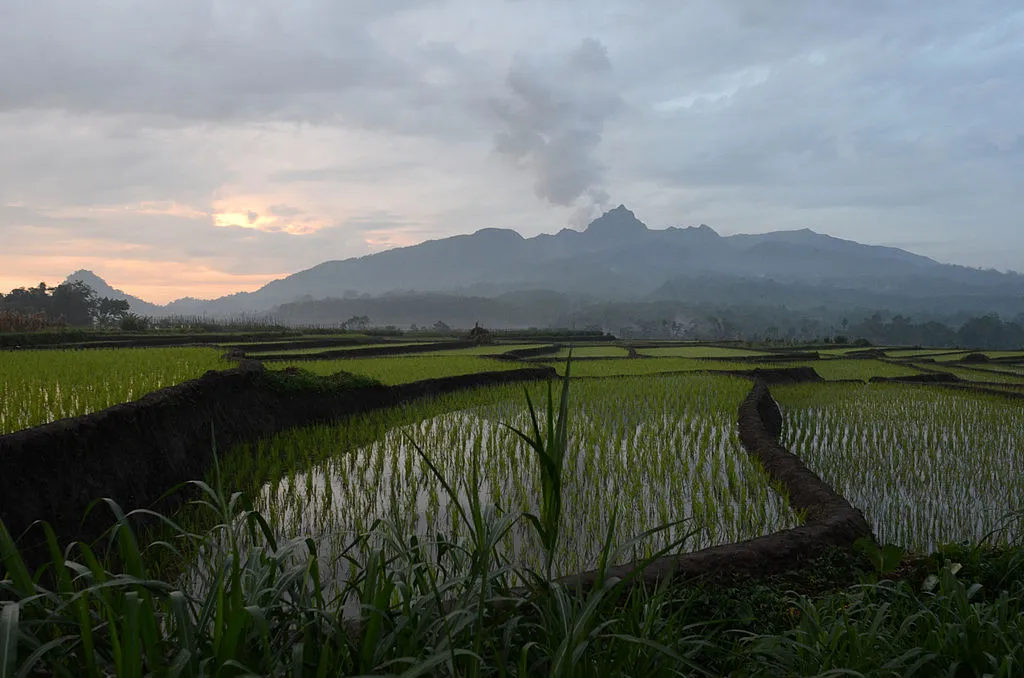
Located in East Java, Indonesia, like many other Indonesian volcanoes, Kelud is particularly prone to large explosive eruptions. Since 10000 AD, there have been more than 30 eruptions, with an explosion in 2007 filling the crater with a lava dome.
Its last eruption occurred on February 13, 2014, which destroyed the lava dome, rocketing stones and ash 500 kilometers from the volcano. Over the years, the volcano has caused the deaths of thousands of people, with one mudflow following an explosion killing 5,000 alone.
Mayon Volcano, Philippines
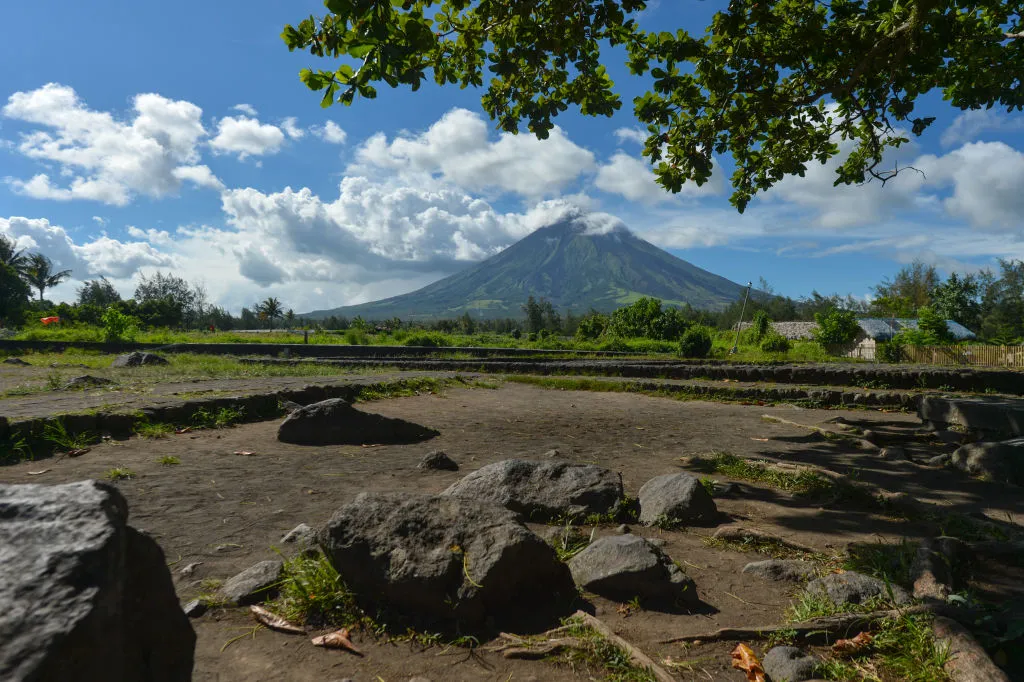
Mayon Volcano can be found in the province of Albay in Bicol Region, on the island of Luzon in the Philippines. It's known for having a "perfect cone" shape, with its surrounding landscape being named a national park in 1938, the first in the Philippines.
It is the most active volcano in the Philippines, erupting over 47 times in the past 500 years with its first recorded eruption occurring in 1616. The most destructive eruption was in 1814 in which around 1,200 locals were killed.
Popocatépetl, Mexico
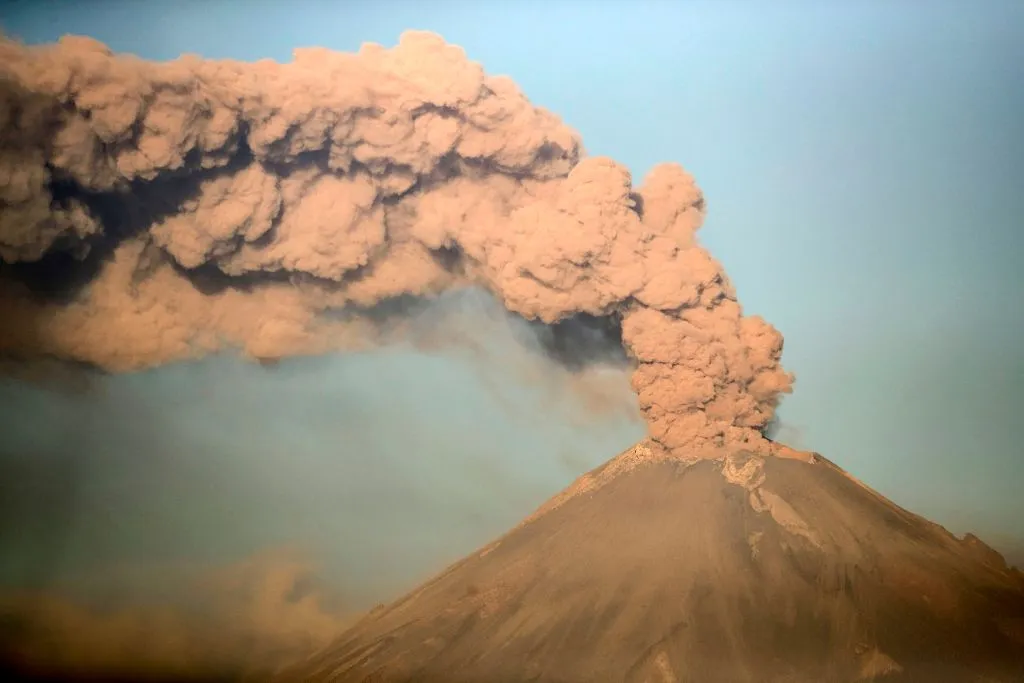
Popocatépetl is an active volcano in the stated of Puebla, Morelos, and Mexico in the eastern half of the Trans-Mexican volcanic belt. it is the second-highest peak in Mexico and is connected to the Iztaccihuatl volcano to the north.
It was one of three peaks in Mexico to contain glaciers, but the size of it decreased due to weather and also volcanic activity. By 2001, the glaciers were gone except some remaining ice. Since the arrival of the Spanish, the volcano has been documented having 15 major eruptions and remains active today.










